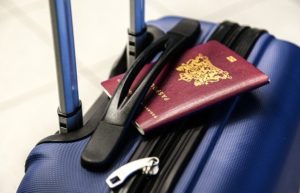
Packing for a trip can be complicated – you need to pack clothes, toiletries, and other essentials. You also need to make sure that your luggage meets the dimensions of the airline you’re flying on. If it doesn’t, then chances are they’ll charge you an extra fee or not allow your bag onboard at all. How to measure luggage dimensions for each airline? Let’s find out the answer here. Each airline has strict guidelines for what size luggage they allow on board, and some are stricter than others. This guide will help travelers understand how to measure their luggage and avoid these unfortunate complications.
Airline Limitations
 Every airline has a maximum size and weight limit for luggage. Luggage that is too large or heavy will not be allowed on board, even if it meets the dimensions of the overhead bins. In most cases, airlines provide their specific baggage allowance in millimeters (mm). Airlines that are more particular about measurements may allow up to an extra inch or two for overhead bins in economy class.
Every airline has a maximum size and weight limit for luggage. Luggage that is too large or heavy will not be allowed on board, even if it meets the dimensions of the overhead bins. In most cases, airlines provide their specific baggage allowance in millimeters (mm). Airlines that are more particular about measurements may allow up to an extra inch or two for overhead bins in economy class.
When measuring your bag’s length, you need to measure from top to bottom, including wheels and handles. When you calculate the depth, check the front to the back of your luggage.
Standard Dimensions of Regular Luggage for Airlines
Most of all airlines in the world have a maximum size of 158cm or 62 inches. It includes the height, width and depth (length + width + height). Also, all airlines have a maximum weight allowance of 23kg or 50lbs. In most cases, the carry-on luggage should be as small as possible and weigh less than 15kg / 33lbs. When it comes to checked luggage, a rule of thumb is that bags should be smaller than 90cm or 35 inches. Travelers who want to avoid any complications while traveling are encouraged to measure their luggage using these guidelines before heading out. It’s always better to double-check and make sure you’re within the airlines’ requirements rather than finding yourself in an awkward situation at the airport.
Reasons to Measure Luggage Dimensions for Airlines
So, why should we measure our luggage dimensions for airlines? There are several reasons why travelers should know their bag’s measurements. First off, luggage that is too big will not be allowed onboard the plane – this means you’ll have to check it in and risk losing your luggage or being charged an extra fee for a carry-on. Bags that meet airlines’ requirements may still be forced into the cargo department if they are overweight. Overweight luggage can also be an inconvenience when trying to fit it in the overhead bin or under your seat.
Reasons Why Your Luggage Must Not Be Over the Limits
 When your luggage is over the limits – it’s too big, heavy, or both to be carried onboard, you’ll have two options: pay an extra fee for a carry-on and check-in your bag or hand it back at the airport. If you decide to check in your oversized luggage and let them deal with any problems that may arise, you should be prepared to pay an extra fee – usually, airlines charge $125 for a bag that is too big and around $200-$300 if the luggage is overweight. Either way, it means you will have to spend money at the airport, so it’s better to check your measurements before leaving home.
When your luggage is over the limits – it’s too big, heavy, or both to be carried onboard, you’ll have two options: pay an extra fee for a carry-on and check-in your bag or hand it back at the airport. If you decide to check in your oversized luggage and let them deal with any problems that may arise, you should be prepared to pay an extra fee – usually, airlines charge $125 for a bag that is too big and around $200-$300 if the luggage is overweight. Either way, it means you will have to spend money at the airport, so it’s better to check your measurements before leaving home.
The airlines might have different sizes for their luggage, so it’s important to know what size you can bring on board. Learning this guide with all the dimensions and bags that are allowed as carry-on or checked baggage can help you. Be wise when selecting your travel clothes, so they don’t exceed any airline size requirements.
